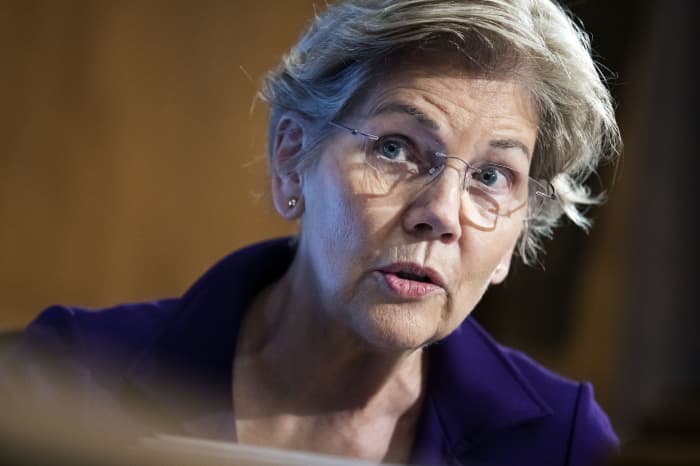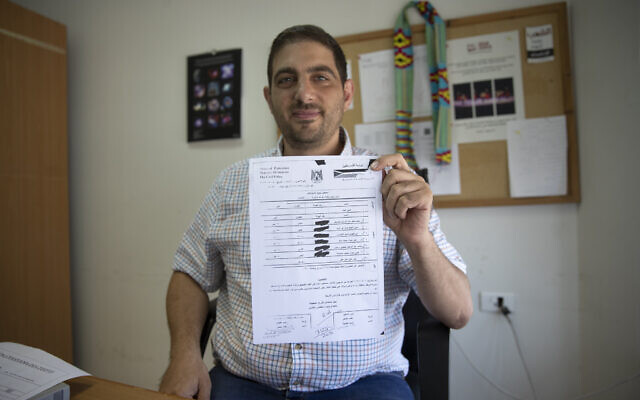Stuti Mishra
Sun, May 8, 2022

A workers quenches his thirst next to power lines as a heatwave continues to lashes the capital, in New Delhi (AP)
Naresh Ahirwar doesn’t stop working when the midday sun beats down on his construction site on the outskirts of Delhi, amid the sustained heatwave conditions that have afflicted northern India for well over a month. The 56-year-old feeks like he is going to faint with each heavy load he carries in and out of the half-erected building — yet resting out the afternoon is not an option, even as the mercury soars above 40C.
“Earlier I used to carry everything without any problem, now it feels like every step is a struggle and I am going to die here,” says the 56-year-old. “But people like me working on daily wages don’t have an option [to stop].”
Near the construction site, a shopkeeper who sells earthenware pots shuts down his shop during the afternoon and takes shelter from the scorching sun under the tarpaulin sheet that otherwise serves as his store’s roof, even if it means he will not make enough money to get by.
“My products are made for the summer season,” explains Sunil Kumar. “I can’t sit at home for the whole summer, but it is getting impossible to stay through the afternoons.”
No one in Delhi is a stranger to this kind of heat, but temperatures that were once reserved for the two peak summer months now stretch on for much longer. This April was by far the hottest since records began, and a heatwave was declared in northern Indian as early as mid-March. There was a momentary respite for some areas with brief rains at the start of May, but forecasters say the mercury is set to rise again to 45C later this week.
“If it was just about a few weeks in May and June we could be prepared to stay at home, but how do we shut our shops entirely if the heat begins in March and stays on for most of the year?” asks Kumar, a 36-year-old father of four.
A delivery agent with a popular food chain says he dips a cloth in cold water and wears it on his head like a turban when he is driving during the hottest hours, in order to get through the day.
“That gives some respite, but the cloth gets dry within minutes,” says 21-year-old Varun. “We have some financial problems at home, because of which I had to pick up this job. I can’t quit it even though many delivery boys like me have fallen sick in this season.”

A woman uses her bag to protect herself from the sun in New Delhi on Wednesday. (REUTERS)
The heatwave affects India’s poorest the most, but no section of society is completely immune to its impacts. In the densely populated high-rise societies of Noida, a satellite city of Delhi, residents switched on their air conditioners much earlier this year and parents are demanding schools be shut or changed to a different schedule because many children have complained of weakness.
“Summers have been getting worse for several years now, our electricity bills have skyrocketed because the house feels unlivable most of the day. But nobody complained, you get used to It. It’s like being a frog in a slowly boiling pot,” says Vivek Arora, a resident of Greater Noida whose children have been home all week due to heat stress. “But this year feels extraordinarily different.”
Hundreds of millions of people have been affected by the extraordinary heat seen this year in India and neighbouring Pakistan — where some places have seen temperatures as high as 52C. Scientists have been warning that this level of heat has cascading effects, not just on human health, but also on ecosystems, agriculture, water, energy supplies and even key sectors of the economy.
The country is already suffering from an acute energy shortage as demand for electricity increases, landfills have caught fire amid the high temperatures, wheat crops have been destroyed leading to a shortage and prices of lemons — a popular remedy for the heat — have skyrocketed with rising demand.

Delhi fire officials take a break while dousing a fire at the Bhalswa landfill in New Delhi on Wednesday. (AP)
Government action so far has been limited to advising people to stay inside during afternoons where possible, and a high-level meeting by prime minister Narendra Modi urging states to come up with plans of their own to combat the heatwave.
But scientists say the footprint of climate change is clear to see in these sorts of extreme weather events, and while the heatwave situation has been unprecedented this year, it is only going to be repeated and get worse as the planet warms.
A study by Imperial College London found that climate change has made heatwaves like this year’s much more likely. “Before human activities increased global temperatures, we would have seen the heat that hit India earlier this month around once in 50 years,” says Dr Mariam Zachariah, Research Associate at the Grantham Institute, Imperial College.
“But now it is a much more common event — we can expect such high temperatures about once in every four years. And until net emissions are halted, it will continue to become even more common.”
In the coming year, more frequent and long-lasting heatwave events are projected to affect the Indian sub-continent as a result of the warming of the tropical Indian Ocean and the increasing frequency of extreme El Nino events, according to an analysis by the Delhi-based communications initiative Climate Trends.
The impacts of this heatwave have already extended beyond the dusty plains of northern India to ravage the Himalayan region, with forest fires reported in the hilly state of Uttarakhand. But such events will also come to affect verdant southern India, which is currently not influenced by heatwaves, by the end of the 21st century, according to Climate Trends.
Climate scientists say it is essential to work on both mitigation through reducing carbon emissions, and at the same to develop adaptation strategies to provide relief to people already suffering from global warming. If governments are not careful, rushing to solve one side of the equation can risk making things worse in the long term —such as India’s current scramble to acquire more coal to meet its spiking electricity demand during the heatwave.
Experts admit it’s a tough balance to strike. “While taking mitigation measures is a must to limit future warming, the extreme, frequent, and long-lasting spells of heatwaves are no more a future risk. It is already here and is unavoidable,” says Dr Abhiyant Tiwari, an assistant professor and programme manager at the Gujarat Institute of Disaster Management.
“Our heat action plans must ensure adaptation measures like public cooling areas, ensuring uninterrupted electricity, access to safe drinking water, and changing the work hours of labourers for the most vulnerable ones at the bottom of the pyramid, especially during extreme heat days.”

Rickshaw pullers sleep as they wait for the few customers venturing out in Delhi (PA)
While India is set to face some of the worst impacts of climate change, so far only one city, Mumbai, has come up with a net-zero plan aimed at decreasing the city’s emissions and increasing its adaptability. Climate change rarely finds a mention in India’s political discussions even though the country faces year-round challenges, from extreme heat to monsoon flooding.
“During extreme winters, there are at least shelter homes for the poor and the homeless, no matter how poor their conditions are there is roof to cover your head for most people. But during the extreme heat, which we now know is going to stay on for longer, there is no arrangement for daily wage labourers or homeless [people] to find respite,” says Sunil Kumar Aledia of the Centre for Holistic Development, an NGO.
The impact of heat stress on health is also highly undercounted in India, with the country only tracking heatstroke deaths where they are medically certified as having been caused by direct exposure to the sun. As a result, while more than 2,500 were reported dead during a really intense heatwave spell in 2015, only a handful of such deaths are reported in other years. Doctors say prolonged periods of warm nights can prove deadly as they limit the body’s ability to recover from daytime heat — but such fatalities would be unlikely to be counted as heatstroke-related.
Failure to adapt working practices to extreme heat also has a major impact on the economy. A study by Duke University found that India lost 259 billion hours of labour annually between 2001 and 2020 because of the impacts of humid heat.
Activists say the government needs to carry out a fresh vulnerability assessment and work towards combatting heatwaves at a disaster level.
“In countries like Saudi Arabia where temperatures of 50C and above have been witnessed, the government policies aim at providing relief to the masses, including changing work timings to ensure no one has to toll in the afternoons,” says Lubaina Rangwala, programme head at WRI India. “The Indian government needs to draft new policies like that.”
The question of how to adapt to a warming planet is no longer hypothetical when it comes to India — meteorologists say that erratic and unpredictable weather patterns are here now. Prior to the first heatwave declaration of the year on 11 March, northern India had seen an unusually cold winter season, something which itself brings risks to pubic health and infrastructure in a country not used to such lows.
Experts point to several different reasons for this year’s erratic weather, including the disruption of the cooling Western Disturbance — a phenomenon associated with rainfall in India — a heatwave in the Arctic and the La Nina phenomenon. But the underlying cause in all these situations can ultimately be attributed to climate change, they say.
“There is no doubt that extreme heat events are increasing in India,” says Mahesh Palawat, vice-president of meteorology and climate change at Skymet Weather Services, a private forecaster. “Global warming has a primary role in this, although there are several other factors at play as well.”
The concern now is that India will continue to break heat records into the summer months, further extending the strain on its energy infrastructure and populace.
“Not only are these heat extremes in India and Pakistan record-setting by far for the month of April, but they’re also setting the stage for further and even more extreme heat waves into May and June, which are already typically hotter months,” says Dr Zachary Zobel, a climate scientist who studies the intersection of climate change and extreme heat and precipitation.
“These patterns are expected to continue, and likely worsen, in the coming years,” Zobel adds. “Even if we stopped emitting greenhouse gases today, the planet will continue to warm for at least another decade.”











